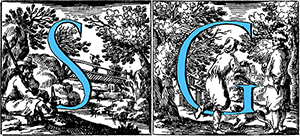
Van de PASSE de OUDE Crispijn I
(Arnemuiden c. 1564 – 1637)
Draftsman and engraver belonging to a family of Dutch engravers.
Born on the island of Walcheren, in the most western part of Holland, still at a young age he moved with his family to Antwerp where he was a student in Haarlem of Coornhert. Later he was also active in Cologne and Utrecth. He was the author of a vast etched work comprising very diverse subjects of invention and some reproductions from Goltzius, Spranger, Bloemaert and other Nordic painters and illustrators.
In particular, having married Magdalena de Bock, a nephew of the wife of Martin de Vos, famous painter and draftsman, he had the opportunity to translate several of his drawings and paintings to print. There is no information about his apprenticeship as an engraver, but his style was very close to that of Johannes and Hieronymus Wierix.
In 1585 he was one of the artists of the Guild of San Luca. At that time he made numerous engravings, especially of biblical scenes taken from subjects by M. de Vos, mainly done for Christopher Plantin, a French publisher who settled in Antwerp.
After the city surrendered to the Spanish troops in 1585, which required the conversion to Catholicism or expulsion, he did not deny his Protestant faith as a Christian Anabaptist Mennonite.
He was therefore forced to migrate for religious reasons. At first he moved to Aachen until even from that territory Protestants were expelled, then moved to Cologne (1589) where he lived for twenty years and where he had five children, of whom Simon, Wilhelm, Magdalena and Crispin II became worthy engravers.
Later he moved to England (1611) where he performed a famous portrait of Elizabeth I, perhaps his most important pictorial work.
Once widowed in 1635, he remarried the following year with a much younger woman much younger, inducing a bitter legal dispute between his children and the new wife for the inheritance.



